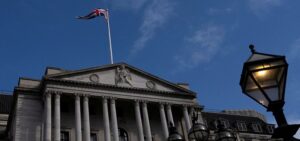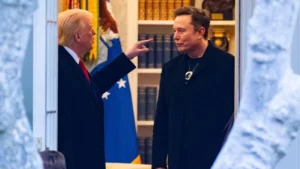London Reset: U.S. and China Revive Trade Dialogue Amid Global Tensions

LONDON, JUNE 9, 2025 — After years of escalating tariffs and policy clashes, senior trade officials from the United States and China convened in London this week to resume formal dialogue—marking a significant thaw in the frosty economic relationship between the world’s two largest economies.
The talks, held on the sidelines of the Global Trade Forum in Westminster, were the first high-level face-to-face meetings since the Geneva truce in May, where both sides agreed to a 90-day halt on any new tariffs. This window is now being used to address core flashpoints that have strained bilateral trade: critical minerals, semiconductor exports, rare-earth supply chains, and academic visa restrictions.
Strategic Themes Take Center Stage
U.S. Treasury Secretary Janet Yellen and Chinese Vice Premier Liu He led the closed-door sessions. According to insiders, the United States pressed for better transparency on Chinese subsidies for clean-tech exports, while Beijing focused on lifting limits on student and researcher visa approvals—a move it sees as key to improving scientific cooperation.
Rare-earth minerals and chip manufacturing featured prominently. As both nations race to secure their positions in the next-generation tech supply chain, control over essential inputs like lithium, cobalt, and gallium has become a contentious issue.
The U.S. side also raised concerns about forced technology transfers and demanded clearer Chinese commitments on intellectual property protection. In return, Chinese negotiators sought guarantees against further restrictions on exports of its AI processors and 5G infrastructure components.
Why Now?
A combination of geopolitical and economic pressures appears to have forced both parties back to the negotiating table. For Washington, inflation concerns and an increasingly protectionist domestic climate—especially ahead of the 2026 midterm elections—make a stable trade environment crucial. For Beijing, slowing exports and capital flight amid investor uncertainty are prompting a more pragmatic foreign policy approach.
Moreover, business lobbies on both sides have pushed for de-escalation. Major tech firms, automakers, and commodity traders are struggling with uncertainty in the regulatory environment. “We need predictability in supply chains, not politics,” said James McCarthy, President of the U.S.-China Business Council.
Markets React with Caution
Global markets responded positively but cautiously to news of the resumed talks. The MSCI World Index ticked up 0.4%, while the yuan gained marginally against the U.S. dollar. However, analysts warn that without concrete agreements before the July deadline, the truce may not hold.
“The mood is constructive, but both sides remain far apart on structural issues,” said Li Zhang, a senior trade analyst at HSBC. “What we’re seeing is a tactical pause, not a strategic shift—yet.”
What’s Next?
The next round of talks is scheduled to take place in Singapore later this month. A joint communiqué issued by both governments stated that “constructive discussions will continue with the aim of restoring a balanced and sustainable trade relationship.”
Whether this diplomatic thaw can turn into a lasting partnership remains to be seen. But for now, global businesses and investors can take a breath—albeit a cautious one.



